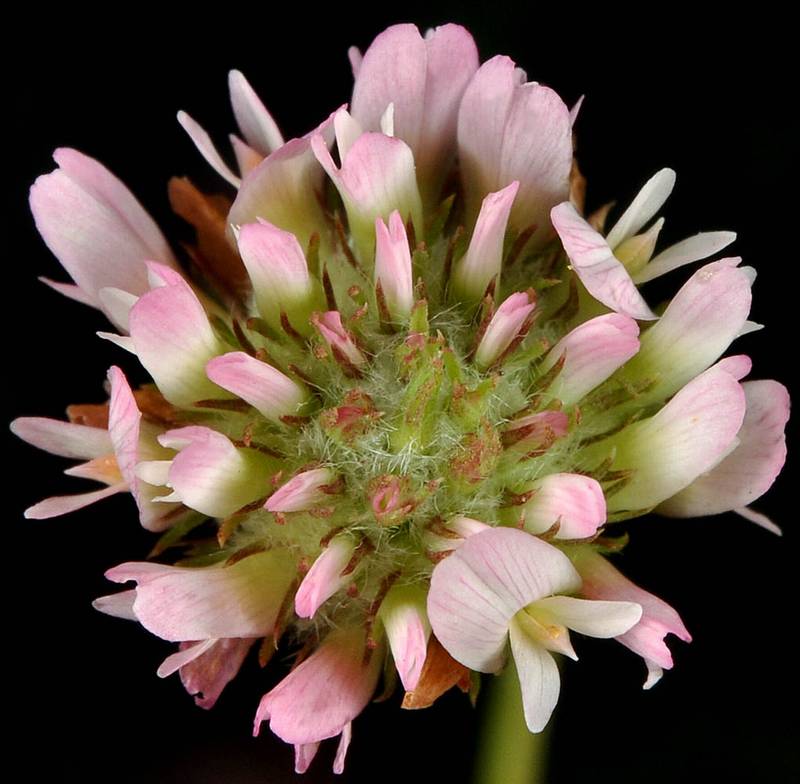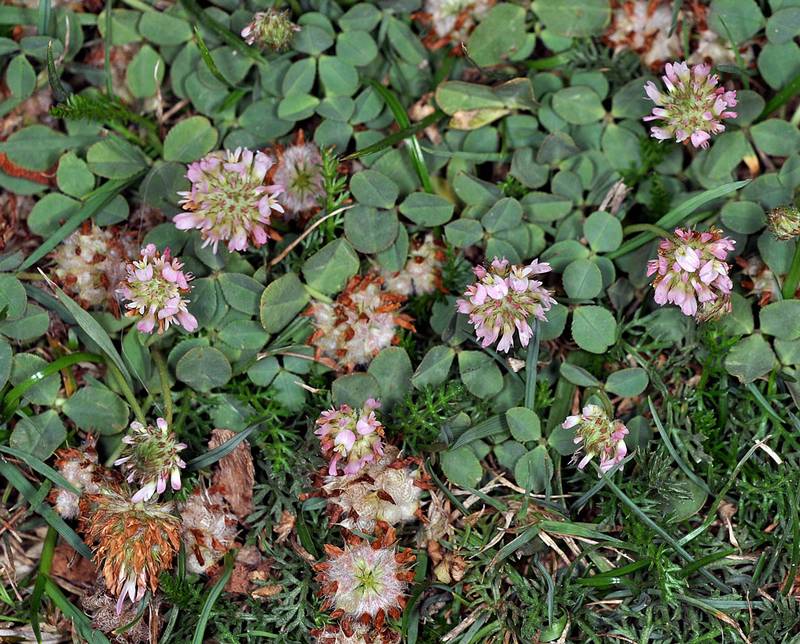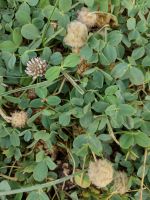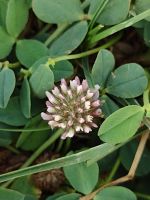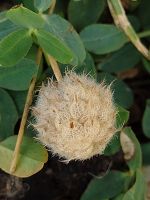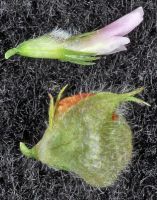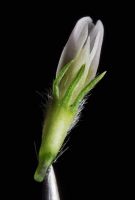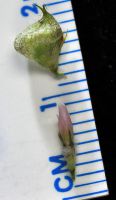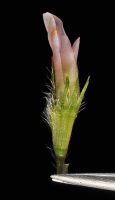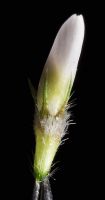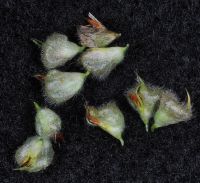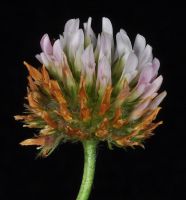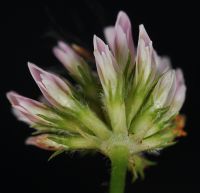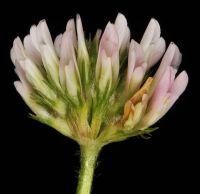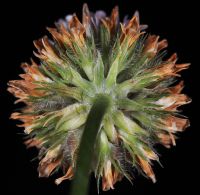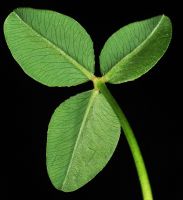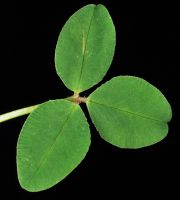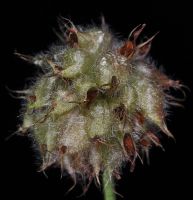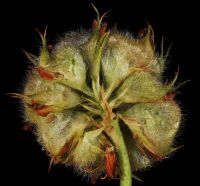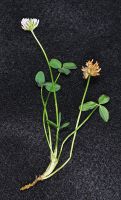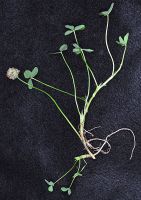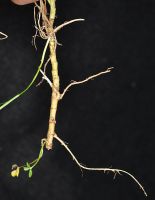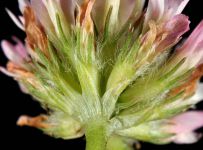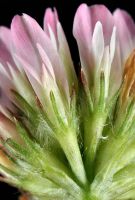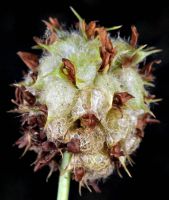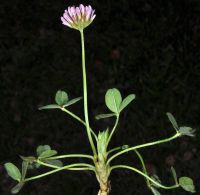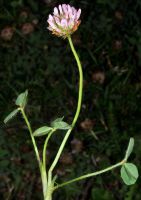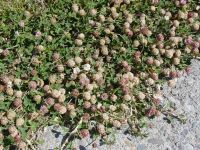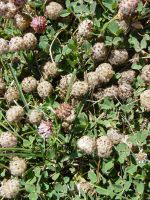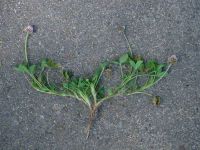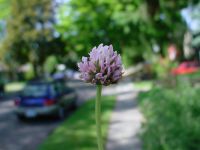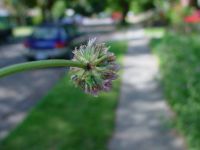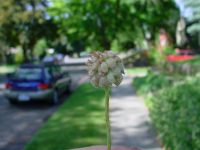Distribution: Occurring in scattered locations on both sides of the Cascades crest in Washington; southern British Columbia to California, east to the Great Plains, also in eastern North America.
Habitat: Roadsides, fields, lawns, wastelots and other disturbed places.
Flowers: April-July
Origin: Introduced from Europe
Growth Duration: Perennial
Conservation Status: Not of concern
Pollination: Bumblebees, bees, butterflies, flies
Pubescent perennial from rhizomes, the stems 5-30 cm. long, decumbent to creeping and rooting at the nodes.
Leaves trifoliate, leaflets obovate, 1-2.5 cm. long, serrulate, very shallowly notched; stipules 15-20 mm. long, narrow, the free portion acuminate.
Inflorescence of many-flowered, globose heads, 10-20 mm. in diameter, on long, naked peduncles; flowers pea-like, 4-6 mm. long, pink to purplish, subtended by narrow bracts, the basal bracts united to form a small involucre; calyx hairy, 5-toothed, nearly as long as the corolla, the tube gradually inflating greatly and becoming strongly net-veined, causing the head to resemble a mass of veined bladders.
Pod.
Publication: Sp. Pl. 2: 772. 1753.
PNW Herbaria: Specimen records of Trifolium fragiferum in the Consortium of Pacific Northwest Herbaria database
WA Flora Checklist: Trifolium fragiferum checklist entry
OregonFlora: Trifolium fragiferum information
E-Flora BC: Trifolium fragiferum atlas page
CalPhotos: Trifolium fragiferum photos

